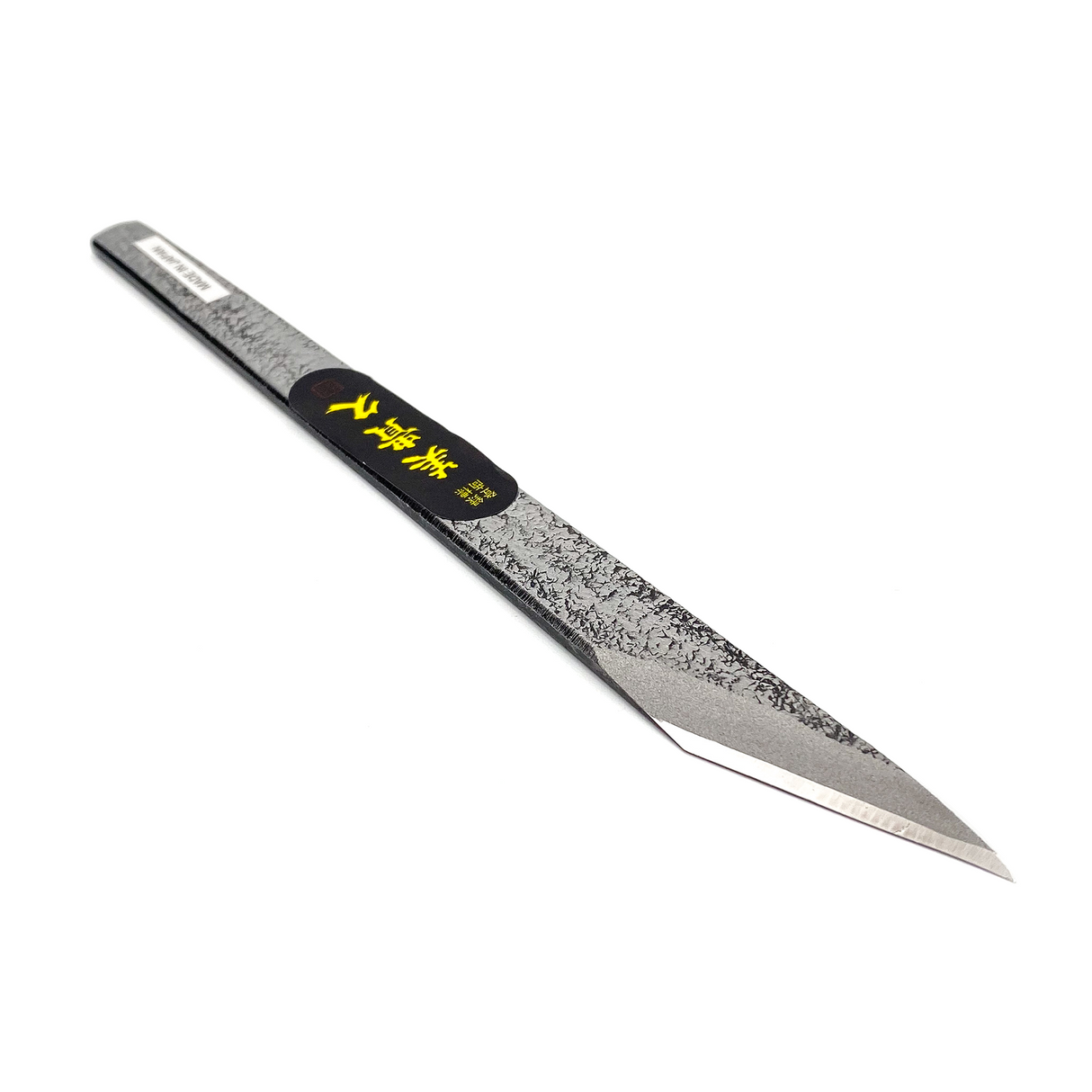Ikeuchi Kiridashi Kogatana Japanese Marking Knife Laminated High Carbon Steel
Sale ends in:
Ikeuchi Kiridashi Kogatana Japanese Marking Knife Laminated High Carbon Steel - 9mm Wide is backordered and will ship as soon as it is back in stock.
Request Further Information
Ikeuchi Kiridashi Kogatana Japanese Marking Knife Laminated High Carbon Steel
![]() Eligible for FREE Shipping*
Eligible for FREE Shipping*
The Kiridashi Kogatana knife is a traditional all-purpose Japanese laminated knife used for marking, trimming, & shaping woodworking & bamboo.
Available in three different widths. Please select your preferred option.
Kiridashi Kogatana cutting knives are made by laminating a high carbon very hard steel (which will take an edge like no other steel) to a softer but tough steel backing. They can be used as they are or with a wooden handle and sheath construction. All the knives are bevelled for right hand use. The top of the blade has a right hand bevel edge with the back side flat & hollow ground for easy re-sharpening. Supplied in a plastic protective wallet. Length 170mm.
Mr. Ikeuchi master blacksmith along with his fellow blacksmiths hand forge, grind, & sharpen these knives. White high carbon steel laminated on top with a softer layer of steel allowing the blade to be hardened to Rockwell 64. With all steel as it becomes harder & tougher, it will be more brittle & can snap in half, the soft steel lamination arrests this possibility. These knives we carry from Mr. Ikeuchi are bevel ground on one side only whereas the underside is hollow ground.
- Made of Shirogami White 1.05-1.15% high carbon steel
- Very pure steel hardened to 64HRC
- Right hand bevel cutting edge
- Traditional style
From the manufacturer:
"Most Ikeuchi Kataba ( single-edged ) knives are made with a loose concave on the back.
This is to reduce the resistance when cutting by reducing the contact surface of the blade.
Customers call this knife a marking knife, but this is a Kiridashi ( cutting ) knife.
The Kiridashi ( cutting ) knife is to shave wood, and is mainly used for engraving in Japan. its use is slightly different."



